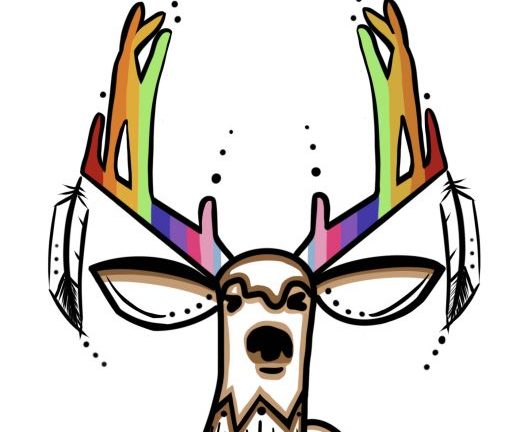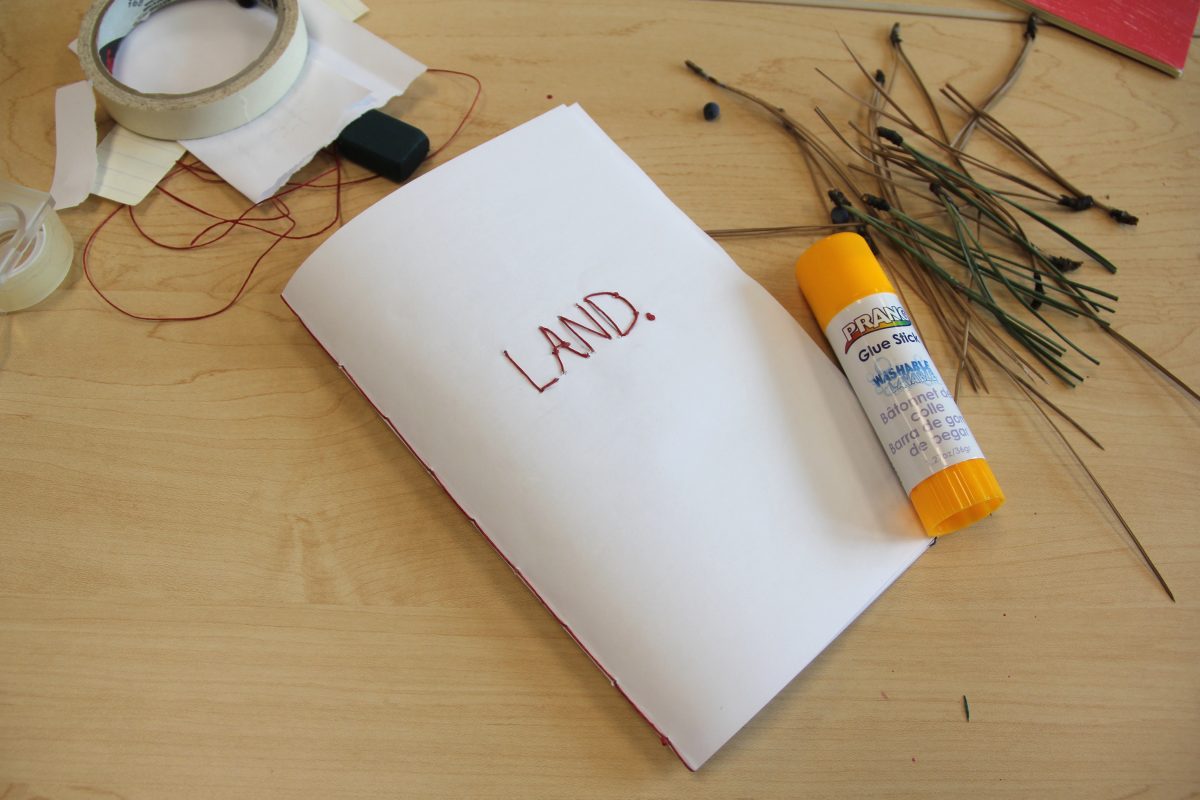Keynote Speakers 2023
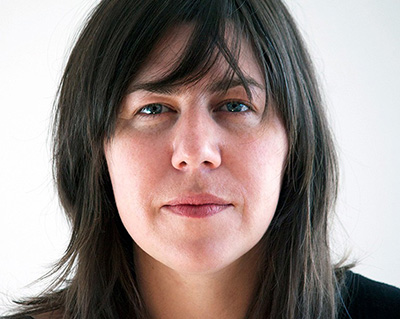
Nadia Myre
Nadia Myre is a renowned interdisciplinary artist and Algonquin member of the Kitigan Zibi Anishinabeg First Nation. As exemplified by seminal works such as Indian Act (2002), The Scar Project (2005-2013), and A Casual Reconstruction (2015), Myre explores the politics of belonging by positioning it within a framework of Indigenous resistance and resilience. Extensively exhibited and collected, Myre’s work can be found in the collections of the National Gallery of Canada, Smithsonian Institute National Museum of American Indian, Kadist Foundation, Musée nationale des beaux-arts du Québec, Art Gallery of Ontario, Montreal Art Contemporary, and Montreal Museum of Fine Arts. Myre is the recipient of numerous commissions and awards, notably the Louis-Comtois Prize (2021), Sobey Art Award (2014) for Canadian artists under 40, and in 2019 was inducted into the Order of Arts and Letters of Québec.
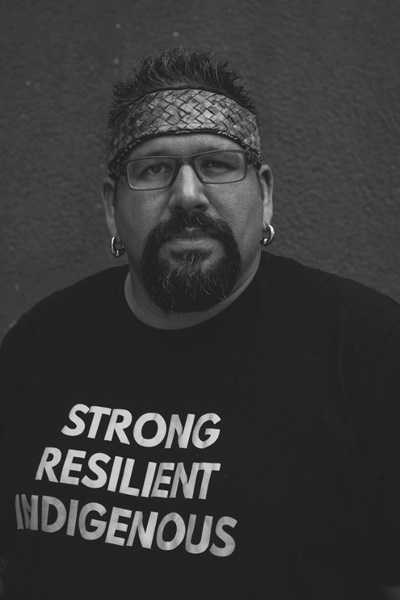
Dion Kaszas
Dion Kaszas is a Nlaka’pamux cultural tattoo practitioner and a leader in the revival of Indigenous tattooing in Canada. He has been tattooing professionally since 2009 and started the revival of Nlaka’pamux tattooing in 2012. Dion travels to National and International events, conferences, and tattoo festivals representing Nlaka’pamux and Indigenous tattooing in Canada.
He specializes in Blackwork with an emphasis on traditional hand tattooing techniques. These include hand poke and skin stitch tattooing methods which arise from his Nlaka’pamux culture. He has had the honor of assisting in the revival of Indigenous tattooing across Turtle Island (North America).
Dion’s passion for tattooing extends beyond his artistic work into the successful completion of his Master’s degree in Indigenous Studies at the University of British Columbia Okanagan. His continued area of research is Indigenous tattooing, focusing keenly on the revival of Indigenous peoples’ tattooing practices, using Indigenous and Creative research methodologies. Since his graduation, Dion has contributed to a variety of publications and exhibitions as an author, editor, curator, and consultant.
His work has been featured in Tattoo Traditions of Native North America: Ancient and Contemporary Expressions of Identity, The World Atlas of Tattoo, and highlighted in Newspaper articles from the New York Times to the CBC. In 2018, he was featured in a variety of documentary films and TV series. These include Skindigenous, a 3 Season, 13-part documentary series produced in association with APTN exploring Indigenous tattooing traditions around the world, and the FOX Nation series USA Ink.
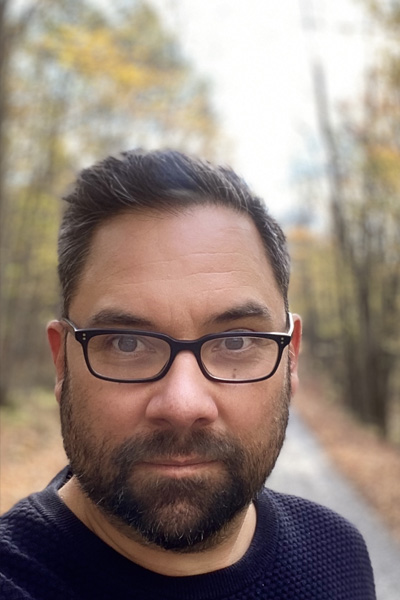
Dylan Robinson
Dylan Robinson is a xwélmexw (Stó:lō/Skwah) artist, curator, and writer, as well as an Associate Professor in the School of Music at the University of British Columbia. He is the author of Hungry Listening: Resonant Theory for Indigenous Sound Studies (2020), a book that examines Indigenous and settler colonial practices of listening. With Candice Hopkins, he is also the curator of Soundings, an internationally touring exhibition with Independent Curators International, that features an ever-growing number of Indigenous art scores and performances. Robinson’s current research examines how public art interpellates the public as settler and Indigenous subjects.
Artists-in-Residence 2023
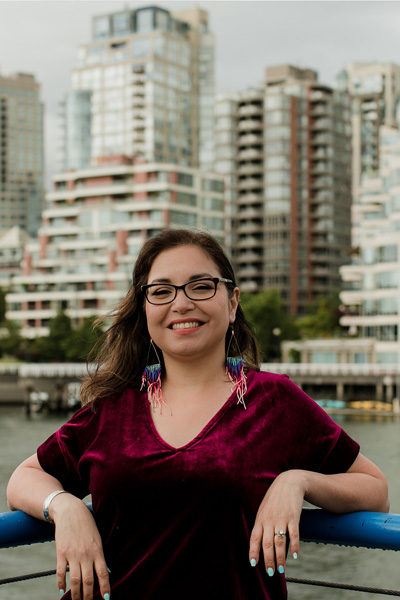
Michelle Sound
Michelle Sound is a Cree and Métis artist, educator, and mother. She is a member of Wapsewsipi Swan River First Nation in Northern Alberta. Her mother is Cree from Kinuso, Alberta, Treaty 8 territory and her father’s family is Métis from the Buffalo Lake Métis settlement in central Alberta. She was born and raised on the unceded and ancestral home territories of the xʷməθkwəy̓əm (Musqueam), Skwxwú7mesh (Squamish) and Səl̓ílwətaʔ/Selilwitulh (Tsleil-Waututh) Nations. She holds a Bachelor of Fine Arts from Simon Fraser University, School for the Contemporary Arts, and a Master of Applied Arts from Emily Carr University Art + Design. Michelle was a 2021 Salt Spring National Art Award Finalist and has had recent exhibitions at the Art Gallery of St. Albert, Neutral Ground ARC (Regina), Daphne Art Centre (Montréal), the Polygon Gallery, and the grunt gallery(Vancouver). Her recent artist residency at Burrard Arts Foundation included her exhibition Aunties Holding It Together.
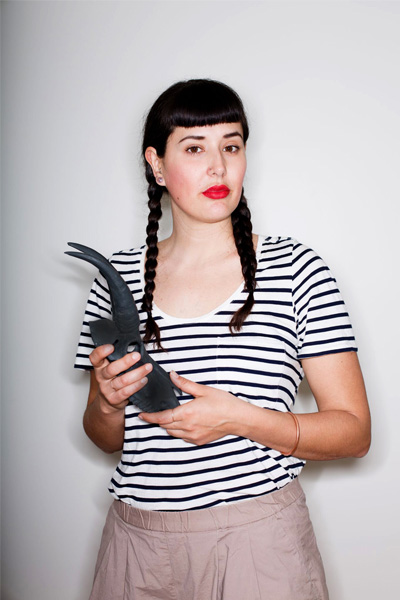
Tsēmā Igharas
Tsēmā Igharas is an award-winning interdisciplinary artist, mentor, mentee and descendant of Tāłtān Matriarchy. Using strategies of care and resistance Tsēmā creates work that connects materials to mine sites and bodies to the land. This practice cites her Indigenous mentorships, Potlatch, studies in visual culture, and time in the mountains. She has studied at K’saan, Emily Carr University of Art and Design, and earned an Interdisciplinary Masters of Art Media and Design from OCADu. Tsēmā has exhibited and performed on Turtle Island, and beyond.
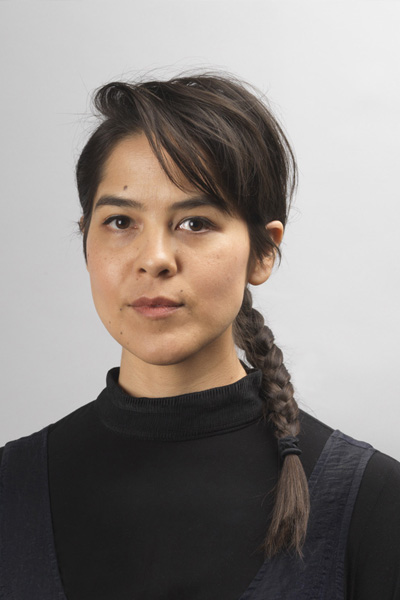
Krista Belle Stewart
Krista Belle Stewart (b. 1979, Syilx Nation; lives in Berlin and Vienna) is a citizen of the Syilx Nation. She works primarily with video, photography, sculpture, and performance, drawing out personal and political narratives inherent in archival materials while questioning their articulation in institutional histories. She has had solo exhibitions at Goethe Institut, Seattle; Museum of Contemporary Art, Toronto; Nanaimo Art Gallery, BC; Künstlerhaus Bethanien, Berlin; Teck Gallery at Simon Fraser University, Vancouver; and Mercer Union as part of the 28th Images Festival, Toronto. Group exhibitions include Kunstverein, Hamburg; Eva International, Limerick; Bonniers Konsthall, Stockholm; CTM Festival, Berlin; International Studio & Curatorial Program, Brooklyn; Musée d’Art Contemporain, Montreal; and Vancouver Art Gallery. Screenings and performances include MoMA’s Doc Fortnight, New York; UnionDocs, Brooklyn; 221A, Vancouver; Plug-In Institute, Winnipeg; and Haus der Kulturen der Welt, Berlin. Her work is currently part of Galerie Barbara Thumm’s online platform New Viewings. She is an MFA graduate from the Milton Avery Graduate School of the Arts at Bard College and is presently a PhD in practice candidate at the Academy of Fine Arts, Vienna.
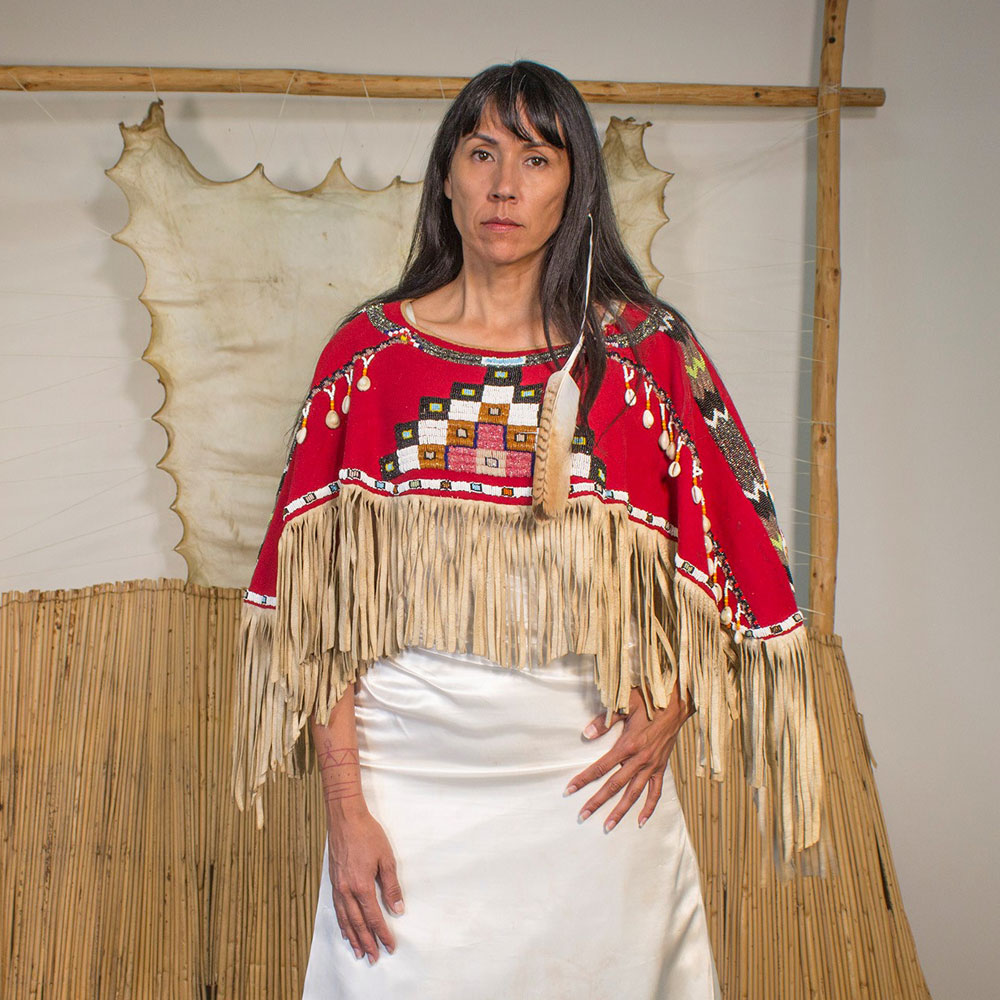
Mariel Belanger
Mariel Belanger is a PhD student at Queens University in Cultural Studies researching ethnographic historical documents and recordings to map the archives for family specific song, story and lived experiences of the Syilx people at the Head of the Lake. Mariel’s research centre’s identity through the lens of Indigenous ways of knowing and being in the world, customary law, Indigenous feminism, smi7may7 Syilx performance theory, intersectionality, the effects of being ‘half’ and exploring how cultural identity is rebuilt through oral history and performance practice. Mariel’s MFA thesis “The Earth Re:Claimed Her. A continuing study of Blood Memory, Embodied Story Practice and Personal Governance” won her an SSHRC scholarship and was the foundation to bringing new histories to light. Mariel has travelled to Chile from Temuco to Socorama demonstrating a sqilxw-centric land-based visitor protocol and performing how colonial violence still affects the bodies of Indigenous women through her performance Illegal: Let Us Live co-authored by the late Dr. Greg Younging. In 2022, Mariel won a CGS SSHRC Doctoral Scholarship and the Teyonkwayenawá:kon – Queens University Graduate Scholarship. Mariel’s writing can be found in the chapter “Sqilxw Woman: She Brings Bundles” in the forthcoming book Unsettling Education: Decolonizing and Indigenizing the Land, “Respons(A)bility: Weaving Words of Responsibility Through Story” in the online journal Revue Percees, “stəqpistns iʔ pqlqin / kihew omīkwan Eagle Feather” in New Directions for Theorizing in Qualitative Inquiry, “Experiencing Resonance as a Practice of Ritual Engagement” co-authored chapter in Research and Reconciliation, and alt.Theatre Cultural Diversity and the Stage Magazine Vol 14.1 through 14.3 as guest curator and writer. www.sqilxw.com
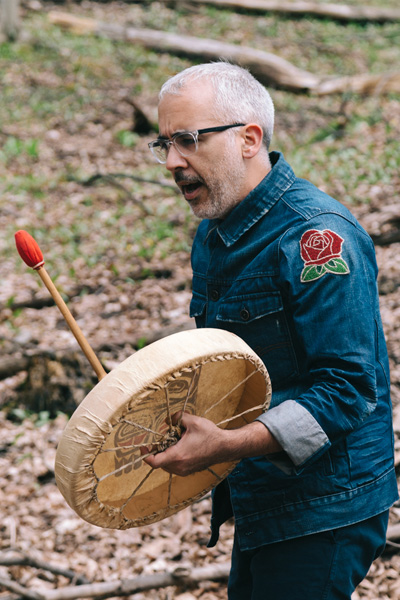
Peter Morin
Peter Morin is a grandson of Tahltan Ancestor Artists. Morin’s artistic offerings can be organized around four themes: articulating Land/Knowing, articulating Indigenous Grief/Loss, articulating Community Knowing, and understanding the Creative Agency/Power of the Indigenous body. The work takes place in galleries, in community, in collaboration, and on the land. All of the work is informed by dreams, Ancestors, Family members, and performance art as a research methodology. Initially trained in lithography, Morin’s 20 years of artistic practice moves from printmaking to poetry to button blanket making to installation drum making to bead work to performance art. Throughout his 20 year exhibition and making history, Morin has focused upon his matrilineal inheritances in homage to the matriarchal structuring of the Tahltan Nation, and prioritizes Cross-Ancestral collaborations as a strategy for interrogating and dismantling the colonialism. Morin was longlisted for the Brink and Sobey Awards, in 2013 and 2014, respectively. In 2016, Morin received the Hnatyshyn Foundation Award for Outstanding Achievement by a Canadian Mid-Career Artist. Morin is working as the Graduate Program Director of the Interdisciplinary Master’s in Art, Media and Design program (IAMD) at OCADU, and the Advisor to the VP Academic on Indigenous Knowledge, Practice and Production. Morin currently holds a tenured appointment in the Faculty of Arts at the Ontario College of Art and Design University in Toronto. Peter is the son of Janelle Creyke (Crow Clan, Tahltan Nation) and Pierre Morin (French Canadian).
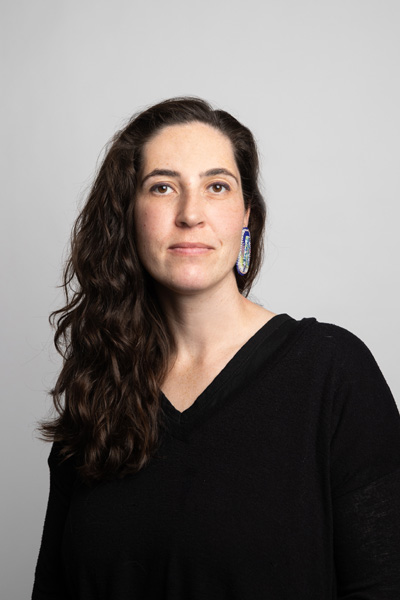
Tiffany Shaw
Tiffany Shaw is a Métis architect, artist and curator based in Alberta. She holds a BFA from Nova Scotia College of Art and Design (NSCAD) University, a Masters in Architecture from the Southern California Institute of Architecture (SCI-Arc) and is currently working at Reimagine Architects. Shaw has exhibited widely including the Architecture Venice Biennale, Winnipeg Art Gallery, Pier 21, Agnes Etherington Art Centre and the Chicago Architecture Biennial. She has been the recipient of multiple public art commissions such as Edmonton’s Indigenous Art Park and Winnipeg’s Markham Bus Station. Among her public art projects Tiffany has produced several notable transitory art works and is a core member of Ociciwan Contemporary Art Collective.
Oscillating between digital and analogue methodologies Shaw’s work gathers notions of craft, memory and atmosphere. Her practice is often guided by communal interventions as a way to engage a lifted understanding of place. While born in Calgary and raised in Edmonton, Shaw’s Métis lineage derives from Fort McMurray via Fort McKay and the Red River.
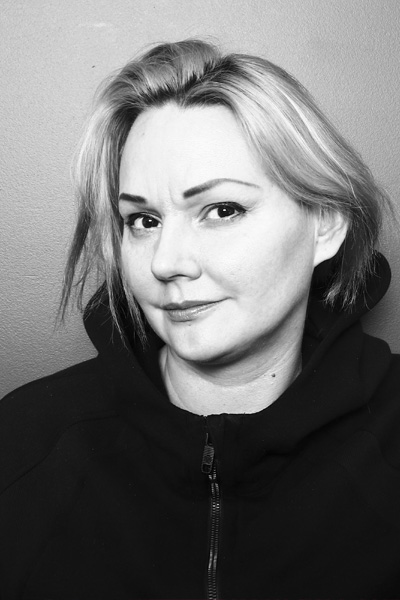
Krystle Silverfox
Krystle Silverfox is a member of Selkirk First Nation (Wolf Clan), and interdisciplinary visual artist. She currently lives and works on the territory of the Kwanlin Dün First Nation and Ta’an Kwach’an Council (Whitehorse, Yukon). Silverfox holds both a BFA in Visual Art (2015); a BA in Gender, Race, Sexuality and Social Justice from UBC (2013); also an MFA in Interdisciplinary studies from Simon Fraser University (2019). Her artistic practice explores different materials, methodologies, and symbols to create conceptual works. Krystle Silverfox is inspired by Indigenous feminism, trans- nationalism, decolonialism, activism, and lived experience.
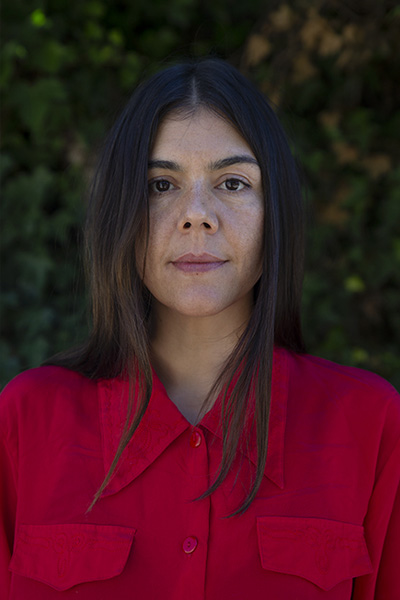
Gabrielle L’Hirondelle Hill
Gabrielle L’Hirondelle Hill (b. 1979, Comox, British Columbia) is a Métis artist and writer. Hill’s sculptural practice explores the history of found materials to enquire into concepts of land, property, and economy. Often, her projects emerge from an interest in capitalism as an imposed, impermanent, and vulnerable system, as well as in alternative economic modes. Her works have used found and readily-sourced materials to address concepts such as private property, exchange, and black-market economies. Hill is a member of BUSH gallery, an Indigenous artist collective seeking to decentre Eurocentric models of making and thinking about art, prioritizing instead land-based teachings and Indigenous epistemologies.
Hill received her MFA from the California College of the Arts, and a BFA and BA from Simon Fraser University. Most recently, her work has been exhibited at the 59th Venice Biennale, Venice (2022); Le Magasin CNAC, Grenoble, France (2022); Museum of Modern Art, New York, New York (2021); College Art Galleries at the University of Saskatchewan, Saskatoon (2020); Cooper Cole, Toronto (2019); Burnaby Art Gallery, Burnaby (2019); Unit 17, Vancouver (2018; 2019) Gallery TPW, Toronto (2018); Art Gallery of Alberta, Edmonton (2018); SBC galerie d’art contemporain, Montreal with the Woodland School (2017); and others. Hill has a forthcoming solo exhibition at the Contemporary Art Gallery, Vancouver. Her writing has been published in many places, including in Beginning With the Seventies (Helen Belkin, 2019). She is also the co-editor of The Land We Are: Artists and Writers Unsettle the Politics of Reconciliation (ARP 2009) and Read, Listen, Tell: Indigenous Stories from Turtle Island (Wilfred Laurier 2017). Hill lives on the unceded territories of the Sḵwx̱wú7mesh, Musqueam, and Tsleil-Waututh peoples.
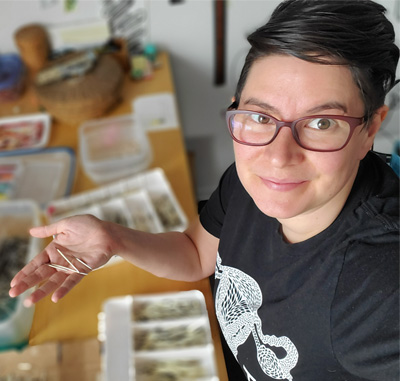
Vanessa Dion Fletcher
Vanessa Dion Fletcher is a Lenape and Potawatomi neurodiverse Artist; her family is from Eelūnaapèewii Lahkèewiitt (displaced from Lenapehoking) and European settlers. She uses porcupine quills, Wampum belts, and menstrual blood to reveal the complexities of what defines a body physically and culturally. Reflecting on an Indigenous and gendered body with a neurodiverse mind, Dion Fletcher primarily works in performance, textiles and video.
She graduated from The School of the Art Institute of Chicago in 2016 with an MFA in performance and a Bachelor of Fine Arts from York University in 2009. She has exhibited across Canada and the USA at Art Mur Montreal, Eastern Edge Gallery Newfoundland, The Queer Arts Festival Vancouver and the Satellite Art show in Miami. Her work is in the Indigenous Art Centre, Joan Flasch Artist Book Collection, Vtape, Seneca College, Global Affairs Canada and the Archives of American Art.
Critical Image Forum Discussion Guest:
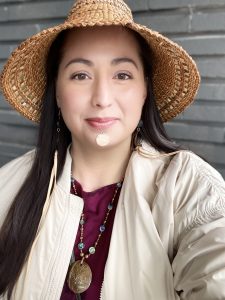
Born and raised on the Annette Island Indian Reserve, Mique’l Dangeli is of the Tsimshian Nation of Metlakatla, Alaska. She is an Assistant Professor in the School of Creative Arts at the University of the Fraser Valley in Abbotsford, British Columbia. Mique’l is a dancer, choreographer, and curator. Her work focuses on Indigenous performing arts, photography, resurgence, sovereignty, protocol, decolonization, and language revitalization. As one of the youngest advanced speakers and teachers of Sm’algya̱x, she is dedicated to teaching her people’s language in community-based and university-accredited classes as well as mentoring learners and educational staff in their process of language acquisition and the creation of pre-K to high school curricula and programs. Since 2003, Mique’l and her husband, artist and carver Mike Dangeli (Nisga’a Nation), have led the Git Hayetsk Dancers, an internationally renowned Northwest Coast First Nations dance group specializing in ancient and newly created songs and mask dances.
